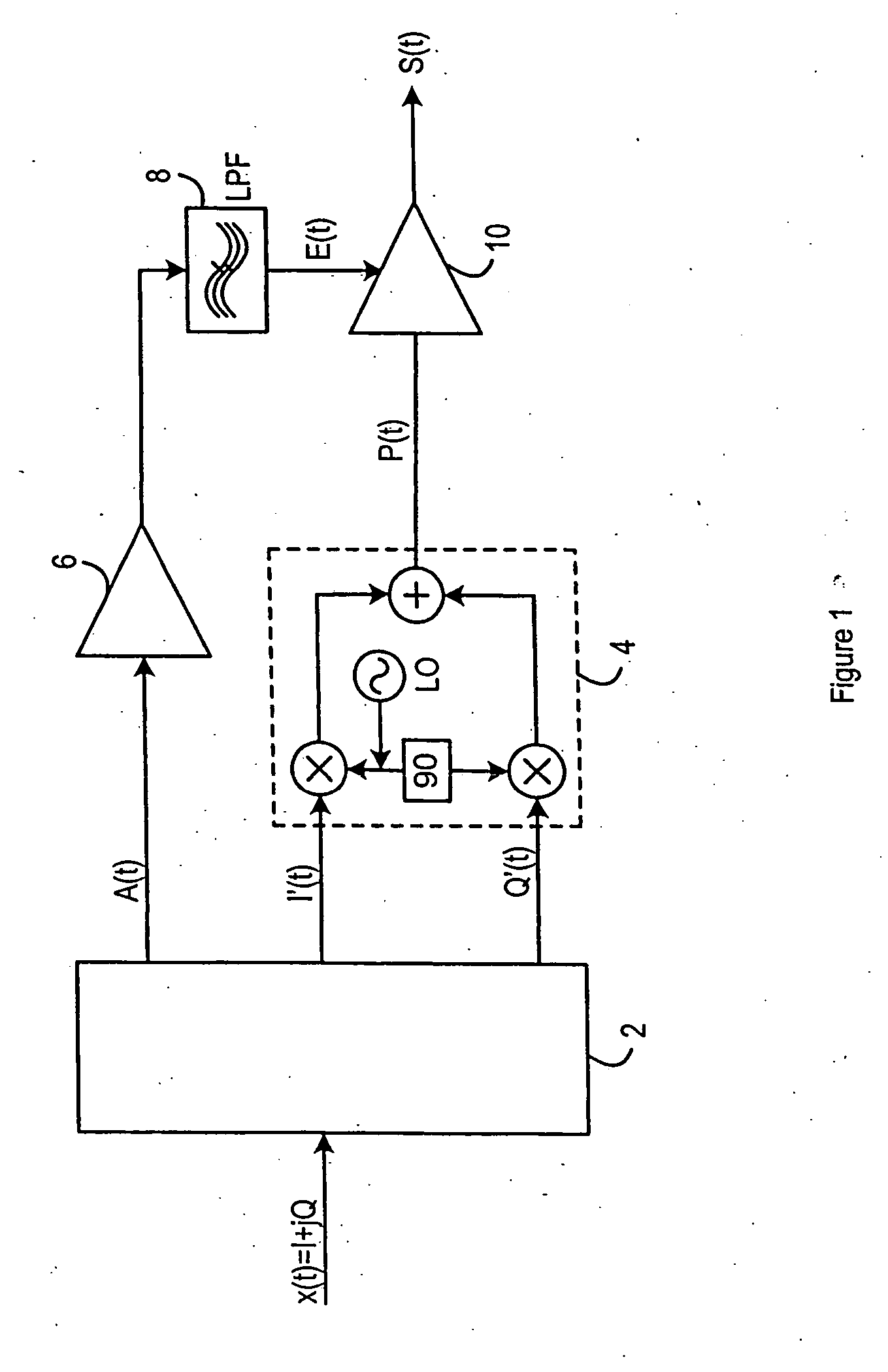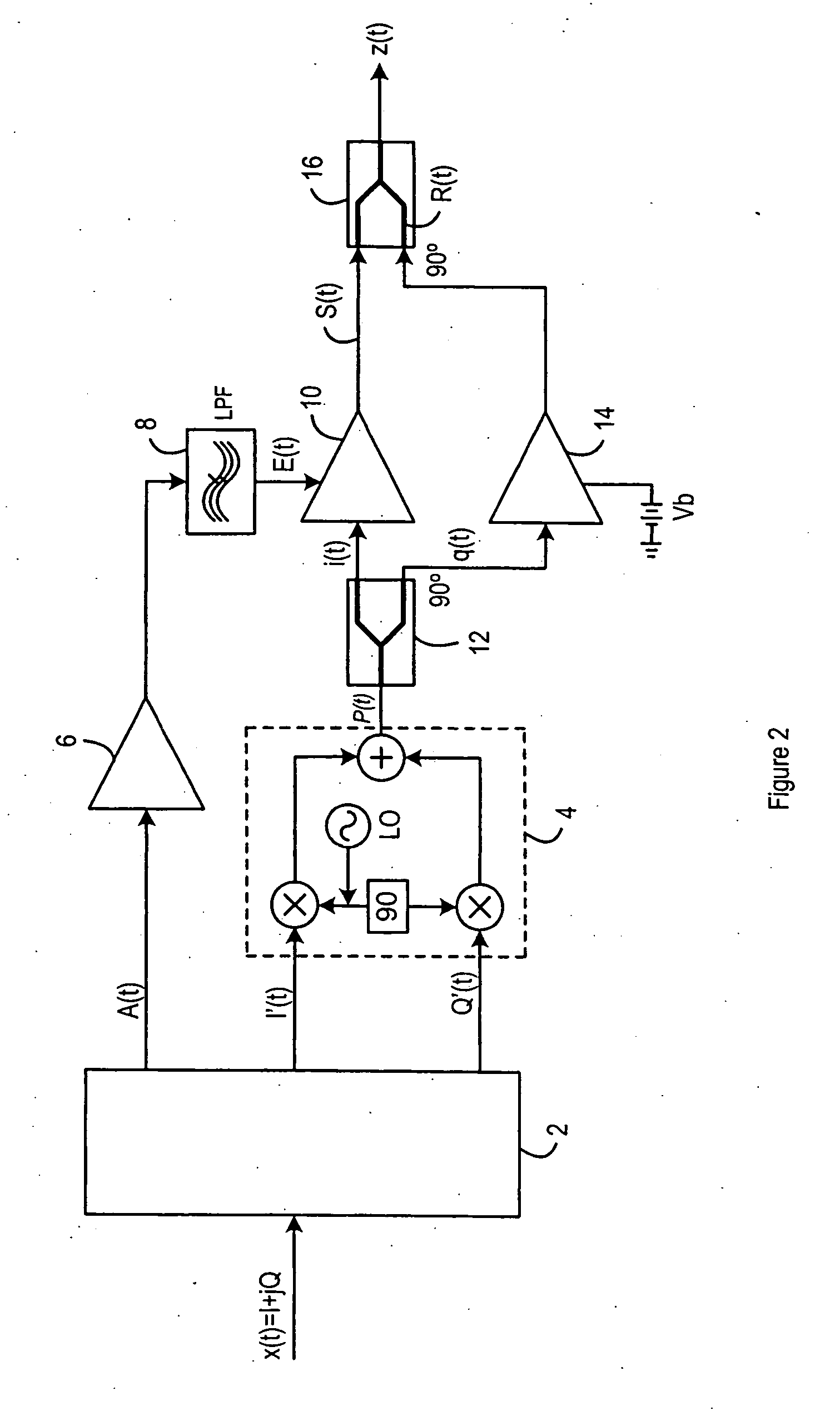Amplifiers
a technology of amplifiers and amplifiers, applied in the field of amplifiers, can solve the problems of undesirable dc offset of the output of the transmitter, reducing the power efficiency of such amplifiers,
- Summary
- Abstract
- Description
- Claims
- Application Information
AI Technical Summary
Problems solved by technology
Method used
Image
Examples
first embodiment
[0018]FIG. 2 illustrates the present invention, which provides an EER transmitter circuit, configured such that the output, z(t), has no DC offset. That is, the output, z(t), is equivalent to the output S(t) of FIG. 1 with no DC offset.
[0019] An input signal, x(t), is input into a signal separation component 2, and converted to an amplitude signal A(t), and Cartesian signals I′(t) and Q′(t), as described in relation to FIG. 1. Again, the signal separation component 2 could be, for example a Digital Signal Processor, or a Field Programmable Gate Array. Within the signal separation component, the amplitude signal A(t) and Cartesian signals I′(t) and Q′(t) are predistorted, as discussed above. The amplitude signal A(t) passes through an envelope modulator 6 and a low pass filter 8. The output from the low pass filter 8 is an envelope signal E(t) which is used to control a first class E amplifier 10, in a manner described with reference to FIG. 1.
[0020] Two class E amplifiers are provi...
second embodiment
[0031] the present invention is shown in FIG. 3. This embodiment differs from the embodiment of FIG. 2 only in the manner of changing the phase of the signal passing through the auxiliary amplifier 14. The phase difference does not have to be generated by the quadrature output of the splitter 12 in combination with the quadrature input of the combiner 16, as it was in the embodiment of FIG. 2. When a standard splitter and a standard combiner are used, with no quadrature inputs or outputs, the 180° phase difference can be introduced by use of at least one phase shifter 22, such that the overall phase shift is the same as that of the embodiment shown in FIG. 2. The requirement is that the signal that passed through the auxiliary amplifier 14 undergoes a total phase shift of 180° with respect to the main amplifier signal. The signal that passed through the main amplifier 10 undergoes no phase shift and therefore has a phase equal to that of the RF phase signal P(t). Signals S(t) and R(...
PUM
 Login to View More
Login to View More Abstract
Description
Claims
Application Information
 Login to View More
Login to View More - R&D
- Intellectual Property
- Life Sciences
- Materials
- Tech Scout
- Unparalleled Data Quality
- Higher Quality Content
- 60% Fewer Hallucinations
Browse by: Latest US Patents, China's latest patents, Technical Efficacy Thesaurus, Application Domain, Technology Topic, Popular Technical Reports.
© 2025 PatSnap. All rights reserved.Legal|Privacy policy|Modern Slavery Act Transparency Statement|Sitemap|About US| Contact US: help@patsnap.com



